The Creation of the Modern Church
The power of ideas to shape the world…
(36) Publication of Critique of Pure Reason (1781) – The publication of Kant’s Critique of Pure Reason changed how people thought of knowledge. Kant declared that our knowledge of things is not things as they actually are themselves, but rather things as we are able to grasp them. In Kant’s theory there is no such thing as purely objective knowledge, and the pure rationality of the Cartesians, Empiricists and the Deistis is an illusion. If knowledge is understood in this manner, than it renders many of the traditional arguments for the existence of God no longer valid. Furthermore, it goes beyond Descartes’ grounding of existence in Human thought to suggest that all knowledge is personal and that wisdom begins in a man’s perception of the world, which may be flawed and influenced by many other factors. Kant’s ideas are still changing how people think about religion and epistemology today.
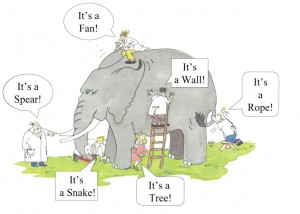
(37) William Carey Founds The Baptist Missionary Society (1792) – If there is a single event that starts Modern Protestant missions, then it is the formation of the Particular Baptist Society of Propagating the Gospel amongst the Heathen (Later shortened >whew!< to The Baptist Missionary Society) by William Caery. This example lead to the establishment of a number of other missionary societies in other denominations. Carey was a teacher and a cobbler by trade, but had a fascination for foreign lands and culture. When the Baptist Missionary Society could not find someone else to send as a missionary, he himself went to Calcutta and began missions there. He adopted many local customs and worked to translate the scriptures into local languages, and worked to train local pastors to work with the Natives. Carey’s methods are still mimicked today in many missionary efforts.
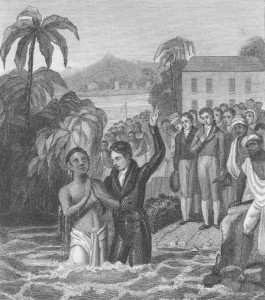
(38) The Second Great Awakening (1800-c.1840) – The Second Great awakening began on the frontier of America and resulted in the founding of a number of societies whose mission it was to spread the Gospel. The Cane Ridge Revival in Kentucky was an large outdoor camp revival meeting attended by thousands. While many came for the religious services, many also just came to gather and some claimed there was as much debauchery as religious conviction. Later waves of the Second Great awakening would involve Baptist and Methodist preachers organizing similar camp revivals periodically. These revivals became common place and part of frontier life. Furthermore the Second Great Awakening began to breakdown the strict correspondence between ethnic origin and religious affiliation, allowing the individual to chose their own religious ties.
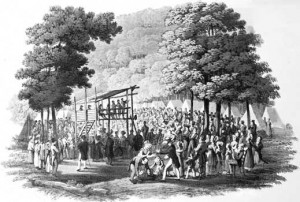
(39) Founding of the Methodist’s Ladies Home Missionary Society (1835) – A Significant characteristic of the Second Great Awakening was the participation of women in the revivals and in founding the missionary societies and other social organizations. In 1835 Phoebe Palmer, a leader in the Holiness movement founded the “Methodist’s Ladies Home Missionary Society” to work in some of the most deprived urban areas of the nation. This society served as a model for many other women’s organizations in other denominations and contributed ideas to what would later become the American feminist movement.
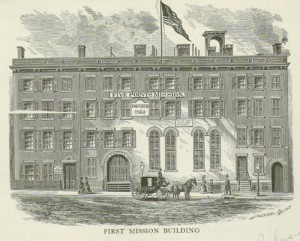
(40) Publication of Origin of Species published by Darwin (1859) – The publication of the Origin of Species would seem like a relatively innocuous publication of a Scientific work, but the theory of evolution presented by Darwin to many seemed to be a direct contradiction to the story of creation as recorded n Genesis. This direct contradiction of science and religion made a debate that had largely been abstract and philosophical into something more concrete and significant. Was Science or Faith to hold the final interpretation? This lead to various historical critiques of scriptures, and a reaction within Christianity varying from one extreme to another. Some pastors were (and still are) forced to declare their position on the theory as a determination of the correctness of their theology. These debates are still being widely held in America today.
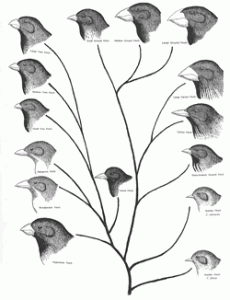
(41) American Civil War (1861-1865) – The American Civil War lead to the break up of many churches into North and South divisions, usually over a response to slavery. Many southern churches sought to support the rights of whites to own slaves and sought proof in the scriptures, while the abolitionist movement was very strong in the North and had support of most of the Churches in the North. After the war it took some churches many years to rejoin their split denominations (the Presbyterians took 115+ years to rejoin their branches!).
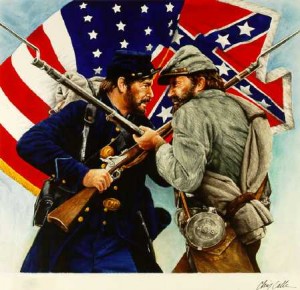
(42) First Vatican Declares Papal Infallibility (1870) – Under Pope Pius IX, the First Vatican Council promulgated the doctrine of Papal Infallibility, stating that when the Pope speaks ex cathedra, then he is “possessed with that divine infallibility …promised to him in blessed Peter.” In actuality this doctrine has only been exercised once since its declaration (that to promulgate the doctrine of the Assumption of Mary in 1950). Some churches withdrew from the Catholic church and founded the Old Catholic Church, but the declaration did not cause a large stir at the time, the Papacy by this time had lost most of its political power. Before the end of the year Rome would surrender before the armies of Italy.
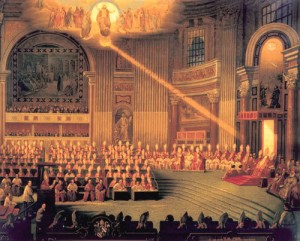
(43) Evangelical Alliance in Niagara espousing Fundamentalism (1895) – Darwin’s theory of evolution and the historical and critical studies taking place in Europe seemed to raise doubts about the scriptures and gave additional impetus to the rise of Liberalism in the United States. The Evangelical Alliance in 1846 was formed to combat liberalism in the Church and in 1895 they published the five fundamentals that could not be denied “without falling into the error of liberalism.” They are the inerrancy of scripture, the divinity of Jesus, the virgin birth of Jesus, Jesus’ death on the cross as a substitutionary atonement for our sins, and finally Jesus’ physical resurrection and impending return.

(44) Azusa Street Revival (1906) – A former slave, William J. Seymour, who had been profoundly affected by the Pentecostal preacher, Charles Parnham, began meeting with a group of believers on Azusa Street in Los Angeles. There were sudden manifestations of the Spirit, including speaking of tongues. Inspired by the events, Seymour and his followers began meeting in a large location on Azusa street. From there the movement spread out into both Whites and Blacks across the nation. Eventually a gathering of believers in the “baptism of the Holy Spirit” was called and there the Assemblies of God church was formed. The revival of Christianity now seeping through the ‘third world’ is largely a Pentecostal movement that can trace its roots back to the humble home of a former slave in Los Angeles.
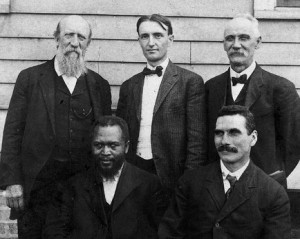
(45) Scofield Bible was published (1909) – Fundamentalism insists upon the inerrancy of scriptures, and some circles this lead to a more literal interpretation of scripture and to the formulation of new schemes of explaining Scriptures and God’s work in the World. Cyrus Scofield developed a popular scheme which became known as Dispensationalism, and divided the whole of human history into 7 dispensations, the current being the sixth of the seven. This interpretation was published in the Scofield study bible and was popular in fundamentalist circles, closely linking fundamentalism with dispensationalism.
(46) Founding of Westminster Theological Seminary and Orthodox Presbyterian Church by Machen (1936) – In response to the growing threat of Liberalism many fundamentalists decided to take action. When their actions could not reverse the impact of Liberalism on their institutions they broke away to create new ones. J. Gresham Machen was a Princeton Professor who lead one such split to create the Orthodox Presbyterian Church and Westminster Seminary, a denomination and seminary devoted to the fundamentals of the faith and their preservation in the face of liberalism. Other schisms of the same sort occurred in many denominations.
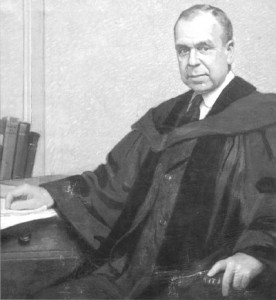
(47) First Assembly of the World council of Churches at Rotterdam (1948) – The Founding of the World Council of Churches was the culmination of years of work begun in 1910 at the first World Missionary Conference in Scotland. The goal was to provide some ecumenical unity for the World church across both the western and the ‘third world’ nations. One hundred and seven churches from forty-four nations were part of the first council. The council sought to be inclusive and seek common ground, eventually even adding Eastern Orthodox churches to the rolls.

(48) Second Vatican Council (1962) – Pope John Paul opened the Second Vatican Council by calling the council members to “respond to the concerns of the modern world with words of understanding and encouragement rather than blistering condemnations.” Of the council members 42% were from Latin America, Black Africa and Asia. The council, which met over several sessions and years, eventually modernizing Catholicism significantly. The council authorized the vernacular languages for us in most liturgies, emphasize the notion of the church as people of God, both laity and clergy and rejected traditional prejudice against the Jews, acknowledging Christianity’s roots in Judaism.

(49) The Chicago Declaration (1973) – In the spirit of the creeds and decrees of previous generations, the a group of leaders of the Evangelical movement joined n the Chicago Declaration, which espouses the beliefs that a vibrant Christian faith calls upon Christians to critique the existing economic and social order. It called on Christians to be active in fighting for justice in the face of injustice, for attacking materialism in the culture both nationally and internationally. Its importance in calling Christians to action should not be understated. Future movements of the “Christian Right” likely grew out of this type of thinking if not directly from this declaration.

(50) The Collapse of communist Rule (1989) – Gorbachev’s policy of Perestroika and the collapse of Soviet influence in lead to greater freedom for churches that had been oppressed for between 50 and 80 years. After all the oppression suffered under communist rule the world was surprised to see the massive growth and the force of Christianity in the formerly Communist regions. In 1989 alone, more than 1,000 orthodox communities emerged and seminaries opened in Belarus and Siberia. In other countries formerly under Soviet rule similar events happened as the Churches gained freedom to worship. Perhaps the power of liturgy and tradition, given such a high place in the Eastern an Russian Orthodox churches, could be a significant tool to help the Western Churches preserve traditions and faith in the face of persecution and social ambivalence.

Division and schism, open ideas and government oppression, war and peace, poor teaching, dogmatism… nothing will stop the Church of Christ from carrying out the Mission of God.